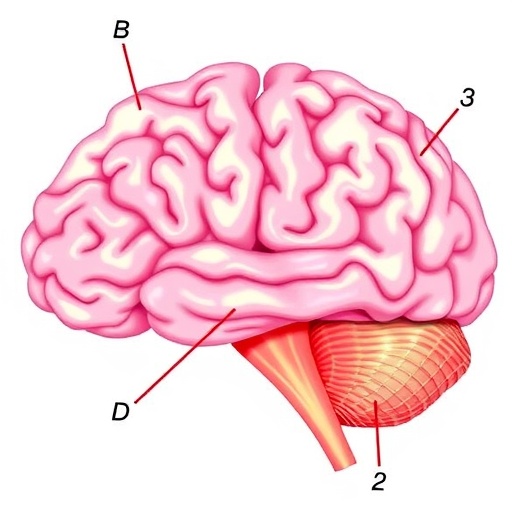In a groundbreaking study published in “Biochemical Genetics,” researchers led by Chen et al. have unveiled profound new insights into the role of the BRI3 protein in glioblastoma, a notoriously aggressive form of brain cancer. Glioblastoma remains one of the most daunting challenges in oncology, characterized by rapid tumor growth, resistance to conventional therapies, and the propensity for recurrence. As standard treatment strategies often fail to yield favorable outcomes for patients, the need for innovative therapeutic approaches has never been more urgent, making the discoveries surrounding BRI3 particularly timely and significant.
The research focuses on the intricate relationship between lipid metabolism, autophagy, and glioblastoma resilience, elucidating the mechanisms through which BRI3 orchestrates these critical processes. In a cancer context, both lipid metabolism and autophagy are essential for tumor cell survival and proliferation, and BRI3 appears to serve as a key regulator that enhances the adaptability of glioblastoma cells under metabolic stress. By integrating lipid catabolism and autophagic pathways, BRI3 may empower glioblastoma cells to withstand harsh environmental conditions often encountered in the tumor microenvironment.
BRI3, or Brain Immune Ig-Like 3, is gaining recognition for its multifaceted role in cellular homeostasis. Recent studies have indicated that it can significantly influence lipid droplet metabolism, which is pivotal for cancer cells that rely on fatty acid oxidation for energy production, particularly in nutrient-poor states. This process not only fuels the cancer cells but also affects their signaling pathways, providing them with a competitive edge against therapeutic interventions.
In the study, the researchers employed advanced molecular biology techniques to analyze BRI3 expression levels in glioblastoma cell lines and patient-derived xenograft models. Their findings reveal that elevated BRI3 expression correlates with enhanced tumor cell viability and proliferation. Importantly, when BRI3 expression was knocked down, glioblastoma cells displayed increased sensitivity to standard chemotherapeutic agents, indicating that targeting BRI3 could potentially sensitize tumors to treatment.
Moreover, the interplay between BRI3-mediated lipid metabolism and autophagy was meticulously explored. Glioblastoma cells have been shown to exploit autophagy to recycle cellular components, a strategy that is crucial for maintaining energy levels and supporting rapid growth. By modulating autophagy-related genes, BRI3 serves as a central hub that not only supports tumor cell survival but also complicates therapeutic responses.
The study conducted by Chen and colleagues offers a new lens through which we can view glioblastoma therapy. By identifying BRI3 as a critical player in the regulation of lipid metabolism and autophagy, the researchers have pointed to potential new targets for drug development. Therapeutic strategies that inhibit BRI3 or disrupt its signaling could pave the way for more effective treatments, potentially leading to better patient outcomes.
On a broader scale, the implications of this research extend beyond glioblastoma alone. By providing insights into the metabolic adaptations of tumor cells, the findings could inform strategies against other types of cancers, where lipid metabolism and autophagic processes also play vital roles. As research into tumor biology continues to evolve, the relevance of metabolic plasticity in cancer treatment is becoming increasingly clear, with BRI3 at the forefront.
As the scientific community digests the implications of these findings, it is imperative that future research not only seeks to unravel the precise mechanisms by which BRI3 operates but also explores its potential as a biomarker for glioblastoma prognosis. A better understanding of how BRI3 expression affects clinical outcomes could lead to personalized treatment protocols, whereby therapy is tailored to the metabolic profile of individual tumors.
In conclusion, the discovery that BRI3 orchestrates lipid metabolism and autophagy in glioblastoma represents a significant advance in our understanding of cancer resilience. As ongoing investigations seek to translate these findings into clinical applications, there is hope that targeting BRI3 could alter the landscape of glioblastoma treatment. With this research, Chen et al. not only illuminate a path forward in glioblastoma biology but also underscore the critical interplay of cellular metabolism in cancer survival.
The path forward is marked by both challenges and opportunities. While the hurdles in translating these findings into viable therapies remain, the identification of BRI3 offers a beacon of hope. As this knowledge continues to unfold, the scientific community stands at the precipice of redefining treatment paradigms for glioblastoma patients, armed with the promise of a more nuanced understanding of tumor metabolism.
Furthermore, the integration of BRI3-centric approaches alongside existing chemotherapy regimens could yield synergistic effects, enhancing the overall efficacy against this challenging malignancy. As researchers delve deeper into the complexity of cancer metabolism, studies like this highlight the critical need for innovative research strategies that can effectively target the underlying metabolic alterations that fuel tumor progression.
Ultimately, this research publication not only adds depth to our understanding of glioblastoma but also serves as a clarion call for renewed focus on metabolic interventions in cancer therapy. Emphasizing the need for collaborative efforts across disciplines within cancer research, this breakthrough offers optimism for the future of cancer treatment, where metabolic vulnerabilities are increasingly recognized as pivotal targets.
As we look forward, the scientific community must remain vigilant in exploring the myriad of ways in which BRI3 can be targeted, with the hope that these advances may soon translate into improved therapy for patients grappling with glioblastoma and perhaps other cancers as well.
Subject of Research: Glioblastoma and BRI3’s role in lipid metabolism and autophagy.
Article Title: BRI3 Orchestrates Lipid Metabolism and Autophagy in Glioblastoma: Implications for Tumor Cell Resilience.
Article References:
Chen, J., Zuo, P., Kuang, S. et al. BRI3 Orchestrates Lipid Metabolism and Autophagy in Glioblastoma: Implications for Tumor Cell Resilience.
Biochem Genet (2025). https://doi.org/10.1007/s10528-025-11225-w
Image Credits: AI Generated
DOI: 10.1007/s10528-025-11225-w
Keywords: glioblastoma, BRI3, lipid metabolism, autophagy, cancer resilience.




